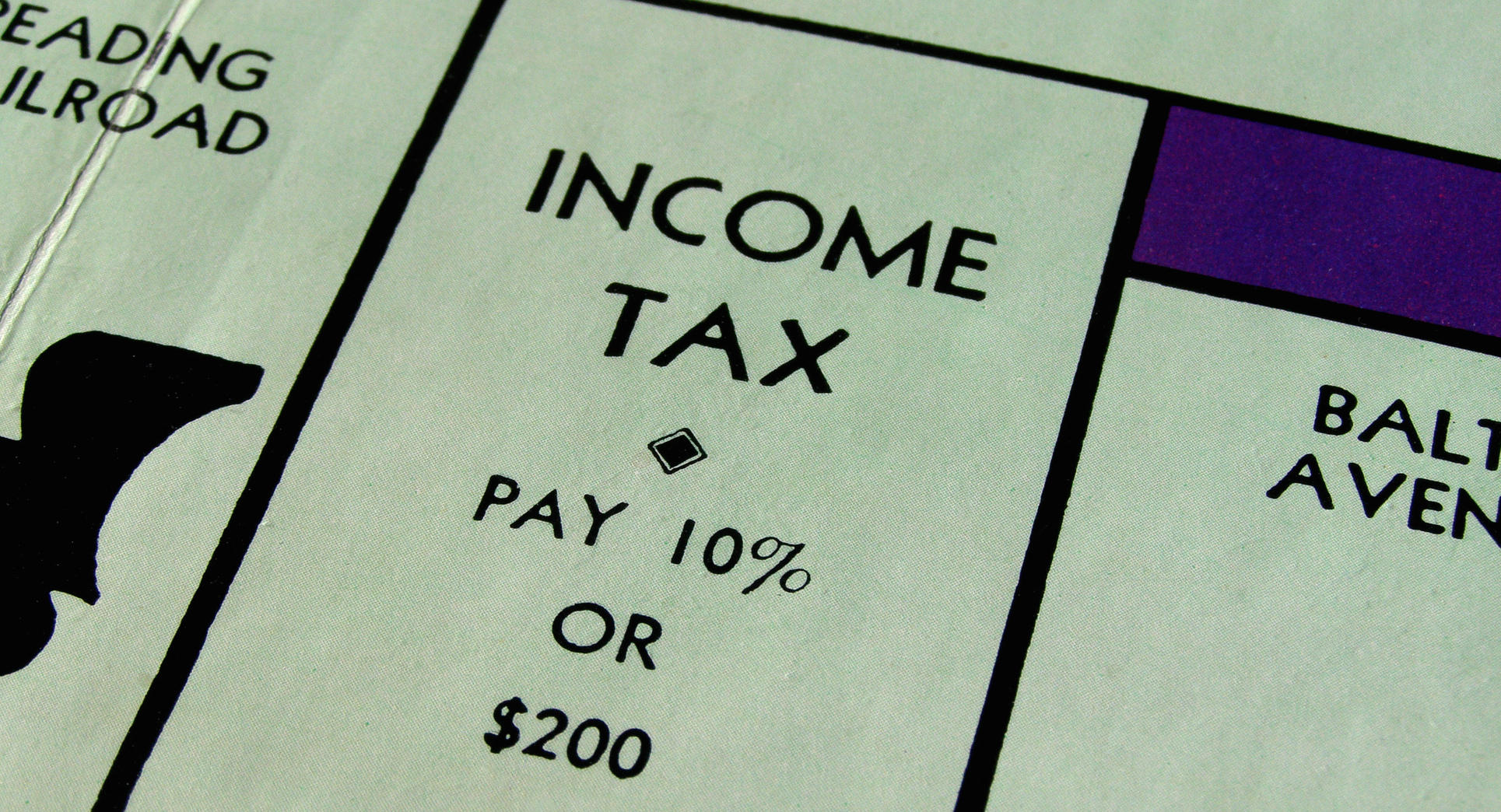The Real History of the American Income Tax
The 70 percent income tax scheme of Rep. Alexandria Ocasio-Cortez and the closely related wealth tax proposal of Sen. Elizabeth Warren would take federal taxation into historically unprecedented territory. You would not know that though from listening to the academic supporters of this newly fashionable cause of progressive taxation.
To advocates of these policies such as economists Thomas Piketty, Emmanuel Saez, and Gabriel Zucman, they simply seek to restore an allegedly lost progressive legacy of high income taxation from the early and middle twentieth century.
Piketty made this argument in the Boston Globe earlier this week, suggesting that the Ocasio-Cortez and Warren proposals simply correct a “historical amnesia” in place since 1980 when a succession of Republican presidents allegedly “turned their backs” on the true origins of income taxation.
Part of Piketty’s narrative rests on misleading statistics. He points to the high statutory tax rates of the mid-20th century, averaging 81 percent on the top income bracket between 1930 and 1980. Yet as we’ve discussed before, nobody actually paid those rates or anywhere close to them. The effective tax rate — that is, the portion of total income earnings that individuals actually pay to the government — was much lower in this same period. Using the early 1960s as a benchmark, it hovered just over 40 percent for $1 million earners despite an average statutory rate, absent deductions, of nearly twice that and a top marginal rate in excess of 90 percent.
But Piketty’s history is faulty on another count. According to his telling, income taxation itself was the original answer to spiraling inequality in the late 19th century:
Between 1880 and 1910, while the concentration of industrial and financial wealth was gaining momentum in the United States and the country was threatening to become almost as unequal as old Europe, a powerful political movement in favor of an improved distribution in wealth was developing. This led to the creation of a federal tax on income in 1913 and on inheritances in 1916.
Even Piketty’s basic historical narrative, however, does not hold up to scrutiny.
The Forgotten Origins of the Federal Income Tax
The federal income tax came into being after the ratification of the 16th Amendment in 1913, but its purpose had little to do with “correcting” income inequality. Rather, the income tax’s origins trace to an obscure debate over another issue that’s seen a resurgence of attention in recent years, the protective tariff.
The story of the 16th Amendment begins in early 1909 after President William Howard Taft called upon Congress to revise the existing tariff schedule of the United States. Tariffs at the time were technically a revenue generator. Before the income tax, import taxes actually provided the largest share of the federal government’s revenue stream. Because of the complexities of international trade however, a “revenue” tariff also provided ample opportunity to extend heavy protectionism to politically connected industries by selectively imposing high rates on their foreign competitors. Tariff schedule revisions in the 19th century accordingly became a political free-for-all of bribes, backroom deals, and favor trading.
This particular approach to lawmaking heavily advantaged the philosophy of protectionism, both by offering it political cover under the auspices of raising revenue and by advantaging legislative logrolling — the practice of bundling hundreds or even thousands of political favors together in the same bill in order to secure enough support to pass Congress. As a result, the period between the Civil War and the early 1900s produced a nearly uninterrupted succession of highly protective “revenue” tariffs.
When President Taft issued his call in 1909, he actually hinted at a desire to see the existing tariff rates reduced and the schedule revised to improve its stated revenue objectives. In the hands of Congress however, the tariff-schedule revision became a personal project of Sen. Nelson Aldrich of Rhode Island, an arch-protectionist and master of legislative procedure. Under his watchful eye, the Payne-Aldrich tariff bill bearing his name quickly devolved into an even more protectionist rate schedule than the older statute it was replacing.
Aldrich’s scheming presented a political conundrum for free traders, most of them clustered in the Senate’s Democratic minority. Free trade had lost almost every major tariff fight in the previous five decades. Even when the Democrats enjoyed a congressional majority and the White House in 1894, their attempt to lower the tariff schedule’s rates across the board quickly succumbed to the same forces of logrolling and favor trading. Cronyism whittled away most of the proposed cuts in the legislative process, as even nominally free trade Democrats discovered they could use the tariff to secure favors for their home districts. By 1909, battling Aldrich directly over tariffs meant certain failure.
Shortly after Aldrich brought his bill to the Senate floor in April 1909, Democratic Sen. Joseph Weldon Bailey of Texas decided on a bold alternative strategy. Rather than attack the tariff head-on and ensuring their defeat, Bailey executed a flanking move to try to drain the Payne-Aldrich bill of its political support. He proposed a parallel federal income tax, aiming to partially “swap” this new source of tax intake for the revenue stream that came from tariff assessments. If tariffs were no longer the primary source of federal tax revenue, Bailey reasoned, the protectionists would lose the cover that the tariff schedule provided for higher discriminatory rates against foreign competitor industries.
Bailey’s plan still faced substantial obstacles. For one, his income tax bill would face an almost-certain Supreme Court challenge if it ever became law. An 1895 case struck down a core provision from a previous iteration of the income tax as being subject to the Constitution’s restrictions on direct taxation. Bailey knew this however, and fully intended to force a new court ruling with the belief that a carefully worded bill could reverse the earlier 5-4 court decision.
The Sausage Being Made
Second, the Democrats were still in the minority with only 32 out of 92 Senate seats. In order for Bailey’s plan to work, they would need to peel away approximately 15 Republicans to back the income tax. This task was not unfeasible. The Republican ranks included about 10 to 12 progressive “insurgents” who favored more expansive taxation to finance other social aims, and who signaled an interest in supporting the income tax.
A handful of other Republicans were growing lukewarm on the party’s protectionist line, which primarily benefited industrial states in the Northeast at the expense of agricultural exporting states in the West. By early May 1909, Aldrich publicly admitted that Bailey might have the votes to pull off his proposed income-tax-for-tariffs revenue swap and temporarily suspended the consideration of the tariff bill on the Senate floor to buy himself time to regroup.
The parliamentary maneuver triggered almost two months of complex legislative jockeying as Aldrich and Bailey courted votes from senators on the fence. The stalemate finally broke on June 29, 1909, when Aldrich forced the withdrawal of Bailey’s measure by engineering a surprise vote on a parliamentary procedure when Bailey was absent from the floor. The Payne-Aldrich tariff became law a few weeks later and, true to expectations, imposed overtly protectionist rates upon the competitors of thousands of politically connected manufacturing firms.
Aldrich paid a steep price to preserve his tariff though. In order to peel enough votes away from Bailey’s competing income tax bill, he had to offer a consolation prize. In exchange for other senators’ abandoning the Bailey plan, he would permit a constitutional amendment to come to the floor in its place, thereby resolving the obstacles to income taxation caused by the 1896 Supreme Court ruling and avoiding the need for another future court challenge on the subject.
From these obscure origins in turn-of-the-century tariff politics, the 16th Amendment was born.
Trade, Not Inequality
The tariff origins of the federal income tax pose a serious complication to Piketty’s narrative, as they contradict the motive he assigns to the policy. Although some of the 10- to 12-member “insurgent” block of Republicans veered closer to Piketty’s narrative, the majority of the income tax’s backers in 1909 did so out of support for free trade and a belief that the proposed revenue swap would finally break the stranglehold of protectionism over the federal revenue system.
For a brief moment, the Democrats’ policy actually worked. Voters punished the Republican Congress in 1910, in part due to backlash against their overreach on the Payne-Aldrich tariff. The election placed the House into Democratic hands, and increased Democrat numbers in the Senate by seven seats. Riding on this wave along with a festering progressive rift in the Republican Party, Democrats won both chambers and the White House in 1912.
While these electoral outcomes heralded a progressive turn of their own in national politics under President Woodrow Wilson, it delivered exactly none of the characteristics that Piketty attributes to the motive and early history of the income tax. In 1913, using the newly ratified amendment, Congress adopted the Underwood Tariff Act — a sweeping rate reduction that successfully overturned the most egregiously protective rates of the Payne-Aldrich schedule and, as Bailey had promised four years earlier, swapped them for a new federal income tax to sustain the government’s revenue stream.
The Underwood Act’s income tax provision only applied to wealthy earners, but it did not enact the exorbitant rates of Piketty’s narrative. The graduated schedule of the original 1913 income tax topped out at only 7 percent, assessed against all income above $500,000.
Congress did turn to high marginal rates later in the decade — but strictly as a war finance measure to fund the United States’ entry into World War I. Income tax revisions in 1917 and 1918 raised the top rates to a peak of 77 percent on income above $1,000,000. But Congress quickly cut these rates once the war was over. After a series of smaller reductions from 1919 to 1924, they settled on a top marginal rate of only 25 percent on incomes above $100,000 in 1925.
The high midcentury income tax schedule that Piketty is so fond of traces its own origin not to progressive wealth redistribution, but to another badly misguided attempt at revenue collection. In the midst of the Great Depression and facing mounting annual budget deficits, President Herbert Hoover proposed and signed the Revenue Act of 1932 in a last-ditch attempt to close the gap before the election.
It was this measure that inaugurated high rates, settling at 63 percent on income over $1,000,000. Although the measure only exacerbated existing strains on the economy, it handed Hoover’s successor Franklin D. Roosevelt an existing progressive tax rate structure that he further ratcheted upward to its midcentury peak.
Misplaced Causality
Piketty, of course, embraces this second wave of income tax increases as vindication of his theory that high progressive tax rates drive down inequality. But even a generous reading of income tax history suggests that this evolution came about not as a conscious inequality-alleviation policy, but rather haphazardly and through several successive steps motivated primarily by the desire for increased federal revenue to finance wartime and then Depression-era spending programs.
Yet as we’ve also seen, Piketty’s causal story is wrong. The high income tax rates at the midcentury mark did not cause wealthy people to disappear and did not reallocate their fortunes downward. They simply induced the wealthiest earners to engage in income shifting — to take advantage of the numerous deductions, credits, and legal income shelters that had been incorporated into the tax code. The result was the one mentioned at the opening of this article. The wealthiest earners paid effective tax rates at midcentury that sat well below their statutory obligations, and only slightly higher than where they are today.
Income tax history provides many lessons on both the effects and perils of high rates. Foremost among these is a tendency to incentivize tax avoidance behavior by the wealthiest earners. It does not however provide the self-evident argument for high income taxation or a completely novel wealth tax today that Piketty assumes. In addition to flubbing basic facts, his account of 20th-century tax history comes across as an attempt to retrofit historical events to his own modern policy agenda. Responsible historians and commentators should resist the temptation of this faulty message.












